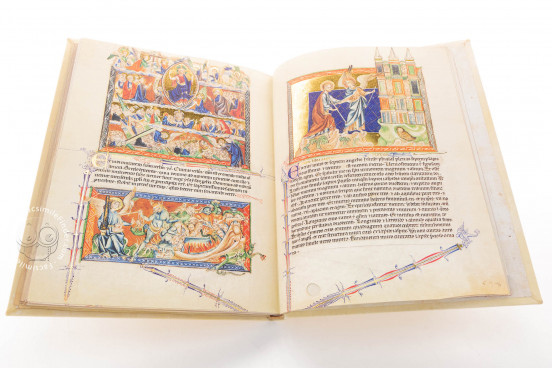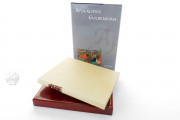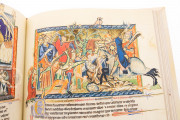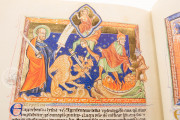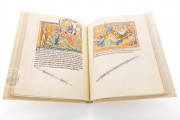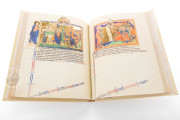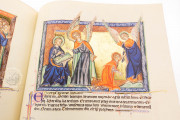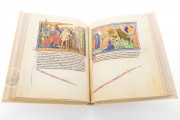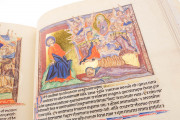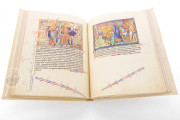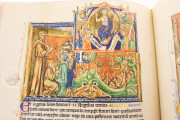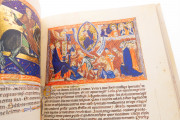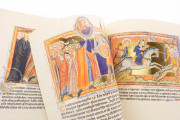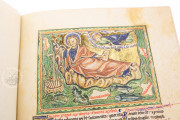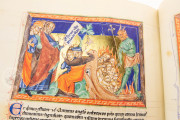The Gulbenkian Apocalypse is one of the most interesting Gothic apocalypses from England. The codex, also known as Apocalipsis Gulbenkian, was written and illuminated in the second half of the thirteenth century. It features an interesting iconographic apparatus that echoes other contemporary Apocalypses such as the Lambeth Palace Apocalypse and the Abingdon Apocalypse (London, British Library, MS Add. 42555), making it a splendid example of thirteenth-century illumination.
Gullbenkian Apocalypse and the Metz Group
The manuscript exhibits an outstanding iconography, probably the work of some workshop in London, and clearly echoes other manuscripts which were produced in the same period and in the same area, such as the Lambeth Apocalypse and the Abingdon Apocalypse, that together with the Gulbenkian Apocalypse belong, iconographically speaking, to the so-called Metz group.
Iconographic Apparatus: Evocative and Representative
Each folio contains a miniature, a section of religious text, and a section of commentary by Berengaudus. Each miniature is placed is such a way to crown the structure of the page, furthermore, all the illustrations are surrounded by a rectangular frame meant to enhance the illustration within rather than to separate it from the rest.
Indeed, more often than not figures or even architectural structures extend out of the frames. The illustrations display a densely populated imagery which is further highlighted by the use of burnished gold and strong colors such as red, blue, and green.
The artist shows great mastery in the use of colors and gold, and in the creation of miniatures which are very evocative and representative of both the text and the glosses. One of the most famous illustrations is the miniature on fol. 1r which portraits the figure of St. John on the island of Patmos as he receives the message of Christ brought to him by an angel.
Tractatus Adversos Judaeos
Interestingly, the illustrative cycle of the Gubenkian Apocalypse is an important source for the understanding of the radical anti-Jewish ideology that developed in the thirteenth century in England and that brought to the expulsion of Jews from the island in 1290.
The Gulbenkian Apocalypse: from Popes to Collectors
The manuscript certainly had an interesting life and, although there is no certainty about the commissioner of the work, it has been suggested that the Gulbenkian Apocalypse belonged to Pope Clement IX (1667-1669).
The manuscript was later acquired (in the second half of the nineteenth century) by Cesare Battaglini, who sold it to Henry Yates Thomson who treasured it until 1920 when Calouste Gulbenkian purchased it from him.
Gothic Script
The Apocalipsis Gulbenkian, featuring a beautiful example of Gothic script, is named after the Fundação Calouste Gulbenkian, a foundation interested in the arts, education, and science, and whose museum currently treasures the remarkable manuscript.
We have 1 facsimile edition of the manuscript "Gulbenkian Apocalypse": Apocalipsis Gulbenkian facsimile edition, published by M. Moleiro Editor, 2001
Request Info / Price
